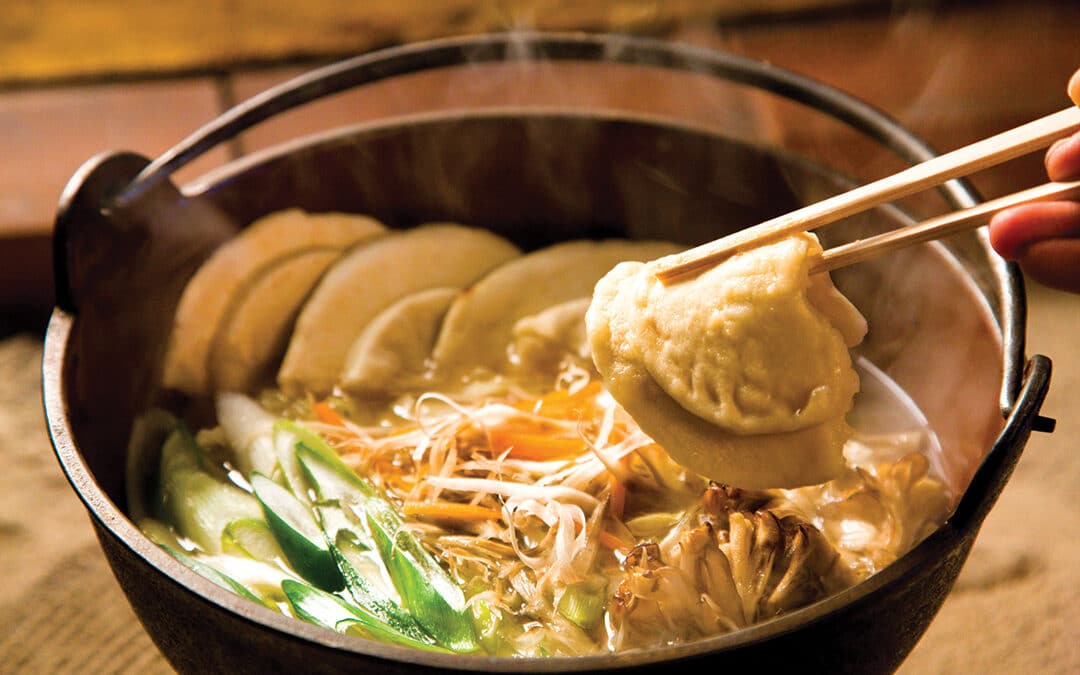Happy New Year Misawa residents! As you know, all people worldwide have been influenced by the coronavirus in the past year. Therefore each and every one of us has a different type of new year to look forward to, embracing tradition in the hopes of feeling a bit of normalcy. In Japan our new year is celebrated with traditions and customs that I would like to share with you in this article. Our New Year’s is called “Gantan,” and “Oshogatsu,” which includes the first three days of January. Oshogatsu carries a lot of weight for Japanese people. Most Americans might compare their Christmas and Japan’s New Year when it comes to special holidays. Personally, I think our definition of New Year’s is similar to American traditions celebrated during Thanksgiving. Christmas is now celebrated worldwide but the Japanese New Year and American Thanksgiving holidays are traditional home country events where you spend time and relax with family or friends. The Japanese New Year originally derived from the Chinese New Year tradition, called “Shunsetsu.”
The Japanese New Year’s holiday begins with Oshogatsu on December 31. Most families are franticly cleaning the house in preparation for their New Year’s feast. The only people that usually get to relax on New Year’s Eve are the children. In Japan we name each month by a descriptive word. For example, December is called “Shiwasu,” meaning “running teacher.” Years ago teachers used to have a very privileged position and were extremely busy at the end of the year, although now things are more relaxed for them. But most families are as busy as teachers used to be on New Year’s Eve. Everyone saves up money and cooks a feast in preparation to celebrate the holiday with loved ones. Once the clock strikes midnight to New Year’s Day everything completely changes. All of the small petty things are left in the past and you can reset and start anew! Mom can stop cooking like a busy bee and take a short break to watch “Joya no Kane” on television (bells are rung 108 times at the temples around midnight to remove the 108 human sins in Buddhism). At the end of the year the busy period stops so people can spend the next three days relaxing and doing nothing.
Over the past few years I think that the size of families has been decreasing, with fewer generations per household and therefore fewer who can have a traditional Oshogatsu. However, the New Year’s feast with “osechi” and “ozoni” are helping keep the traditional Oshogatsu alive. For Thanksgiving Americans have turkey, pumpkin pie, ham and stuffing. For Oshogatsu Japanese have osechi where we cook elaborate dishes and each dish holds a special meaning. A popular dish is “kurikinton,” made from strained chestnuts and yams. Kurikinton is yellow and symbolizes gold, so by eating this dish at the feast you decrease your chances of having a hard time with money. “Dashimaki tamago” is a broth-rolled omelet that represents fabric and symbolizes having no trouble getting clothes. “Burino teriyaki” is grilled yellowtail fish with sweetened soy sauce. This dish brings good fortune for promotions since yellowtail have different names for each stage of life as they grow into a mature fish. It might be fun to think about these traditions when you see these foods at the store or actually get the chance to eat these dishes. Lastly, we have a New Year’s dish called ozoni. This bowl of soup can vary in taste depending on how each household cooks it. Ozoni usually has rice cake but this area of Japan usually uses “senbei” (crackers made of baked rice flour) instead due to the strong taste of the monsoon harvest. We call our version “senbeijiru” and you can have this local dish throughout the year. A good place to find “senbeijiru” is at Minato Shokudo, where they also have sashimi. Be quick, though, as this restaurant only fits 15 to 20 people and will close as soon as they sell out of food. You can also quickly cook this senbeijiru at your home. Please reference the recipe below. After preparing such a feast the day before, everyone will usually have sushi as a celebration meal on New Year’s Day. In Hachinohe many people visit a popular high-grade conveyor belt sushi bar that only has take out reservations on January 1 because of how many orders they get.
One of the fun things to do on New Year’s Day is the tradition called “hatsuyume.” This is trying to remember the first dream you see at night on New Year’s Day. If you remember the dream you saw from the night of January 1 on the morning of January 2, the dream is supposed to come true. I don’t usually remember the night’s dream because I am always in a deep sleep. If you can think about the hatsuyume tradition before you go to bed on January 1, you might see a fortunate dream.
We use auspicious symbols and designs derived from “Shintoism” for celebrating the Japanese New Year. We have included those symbols and designs on almost every page of this January edition of the Leisure Times. You may not be familiar with some of the meanings behind each symbol. Pine trees, bamboo and plums represent immortality, longevity and integrity, while tying strings is an expression of happy occasions. You will see these symbols and designs at shrines or passing by houses off base during the three days of “Oshogatsu.” These traditional New Year’s happy symbols and designs were hidden in this edition by the Marketing & Publicity staff. Try to find those symbols throughout this magazine. You might have small lucky occurrences during 2021 based on how many you can find! Share any images of the traditional Japanese New Year ’s dishes you saw or experienced this New Year’s Day on our Facebook Page @Misawa AB Force Support Squadron.
Senbeijiru
Ingredients (two people)
2 Japanese rice crackers, (senbei – can order online)
1 burdock stalk
1/2 carrot stalk (you can get ready-to-use cut burdock and carrots at the grocery store)
1/2 stalk Japanese long onion
100 g (.22 pounds) chicken thigh meat
20 slices dried shiitake mushrooms
3.5 ounces of water
Seasonings
1 teaspoon Instant Japanese Broth, (“Ajinomoto”)
2 teaspoons soy of sauce
2 teaspoons of sake
-
Break senbei into bite size pieces.
-
Immerse dried shiitake mushroom in water
-
Cut burdock and carrot into long thin shavings, cut Japanese long onion at an angle.
-
Slice chicken thigh meat into quarter inch pieces.
-
Bring the water and mushrooms to a boil. Put seasonings, burdock, carrots and onions into the boiled water. Then place the chicken into the pot and boil over medium heat until cooked.
-
Put senbei in two bowls. Pour the hot soup into the bowl over the rice crackers. You can garnish the dish with dropwort to taste.


